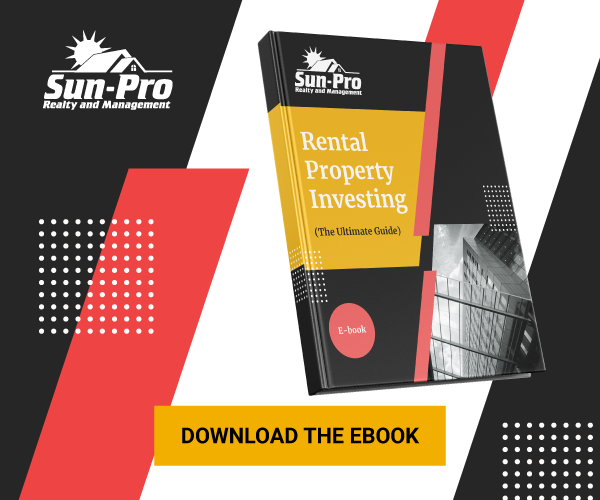.png)
Key Takeaways
- Key Metrics Drive Smart Decisions: Understanding metrics like ROI, Gross Rental Yield, and Net Rental Yield helps real estate investors make informed decisions, minimize risks, and maximize returns.
- Property Performance Indicators: Metrics like vacancy rates and cash flow provide valuable insights into a property’s current performance, guiding investors to assess profitability and make adjustments if needed.
- Long-Term Value with Appreciation: Appreciation rates offer a critical perspective on a property’s long-term growth potential, impacting overall ROI and helping investors predict future market trends.
To thrive as a real estate investor, understanding key performance metrics is essential. These indicators help you make smarter investment decisions, minimize risk, and maximize your return on investment (ROI).
The real estate market is fast-paced and constantly evolving. Staying competitive means staying informed, and the best way to do that is by mastering the numbers that truly matter.
In today’s blog, Sun-Pro Realty and Management breaks down six essential real estate metrics every investor should know. While they aren’t ranked by importance, each one plays a vital role in helping you succeed in a dynamic market.
Return on Investment
Return on Investment, or ROI, is one of the most commonly used metrics in real estate, and for good reason. It measures the profitability of an investment by comparing the income it generates to the total cost of the investment.
For landlords and real estate investors, calculating ROI helps determine whether a property is financially worthwhile. The basic formula is:
ROI = (Net Profit / Total Investment Cost) × 100
To find the net profit, subtract your operational costs, such as mortgage payments, property taxes, maintenance, and repairs, from the gross rental income.
This formula applies to both residential and commercial properties and offers a useful snapshot of your potential return. However, ROI should be viewed as one part of a larger financial analysis. It’s a great starting point, but not the sole factor in your investment decision-making.
Gross Rental Yield
Gross Rental Yield measures the annual rental income of a property as a percentage of its purchase price, before factoring in expenses. It’s a quick way to assess how lucrative a rental investment may be.
The formula is:
Gross Rental Yield = (Annual Rental Income / Property Value) × 100
For example, if you rent out a property worth $400,000 for $2,000 per month, the annual rental income would be $24,000. Using the formula:
Gross Rental Yield = ($24,000 / $400,000) × 100 = 6%
In general, a gross yield above 5% is considered solid in most real estate markets. So, a 6% yield in this scenario suggests the investment could be a worthwhile opportunity.

Net Rental Yield
While Gross Rental Yield gives a general idea of a property's return, it doesn’t account for ongoing expenses. For a more accurate picture of profitability, investors use net rental yield, which factors in operating costs.
The formula is:
Net Rental Yield = (Annual Rental Income – Annual Expenses / Property Value) × 100
Let’s say your property rents for $2,000 per month and is valued at $400,000. If your monthly expenses (insurance, maintenance, taxes, mortgage, and management fees) total $650, then:
- Annual rental income = $2,000 × 12 = $24,000
- Annual expenses = $650 × 12 = $7,800
- Net income = $24,000 – $7,800 = $16,200
- Net Rental Yield = ($16,200 / $400,000) × 100 = 4.05%
While 4.05% may seem modest, it’s a reasonable return in today’s market. To improve it, focus on minimizing expenses—such as renting to reliable tenants who pay on time, take care of the property, and are likely to renew their lease.

Vacancy Rate
Vacancy rate is a key metric that shows the percentage of unoccupied rental units in a property. It's an important indicator of performance, as high vacancy can significantly impact your rental income and overall ROI.
The formula is:
Vacancy Rate = (Number of Vacant Units / Total Units) × 100
For example, if 3 out of 15 units are vacant, the vacancy rate is:
(3 / 15) × 100 = 20%
A high vacancy rate may point to problems with the property, pricing, or location. On the other hand, a low vacancy rate suggests strong demand, stable cash flow, and a potentially higher return on investment.
Appreciation Rates
Appreciation refers to the increase in a property's value over time. When a property appreciates, it becomes more valuable than when it was purchased, boosting your return on investment (ROI), even without upgrades or renovations.
For example, if you bought a property for $200,000 and its value increased by 20% over five years, it would now be worth $240,000.
Appreciation plays a significant role in long-term profitability. If you're considering a new investment, analyzing historical appreciation rates in the area can help you gauge future growth potential and make a more informed buying decision.
Cash Flow
Cash flow measures the income left after all rental property expenses are paid and is a key indicator of financial performance. Positive cash flow means your rental income exceeds your operating costs, showing the property is generating a profit.
Negative cash flow occurs when expenses are higher than rental income, suggesting the investment may not be sustainable. Monitoring cash flow regularly helps ensure your property remains financially viable and supports long-term investment goals.

Conclusion
While there are many other real estate metrics to consider, the ones discussed here offer a solid foundation for making well-informed decisions that can maximize your return on investment. Understanding these key figures is essential for navigating the complexities of real estate investing and ensuring long-term profitability.
If you have any questions or need expert guidance in the Daytona Beach area, Sun-Pro Realty and Management is here to help. Our team of professionals can assist with strategic advice, property management, and more to help you achieve your investment goals. Contact us today to learn how we can support your success.
